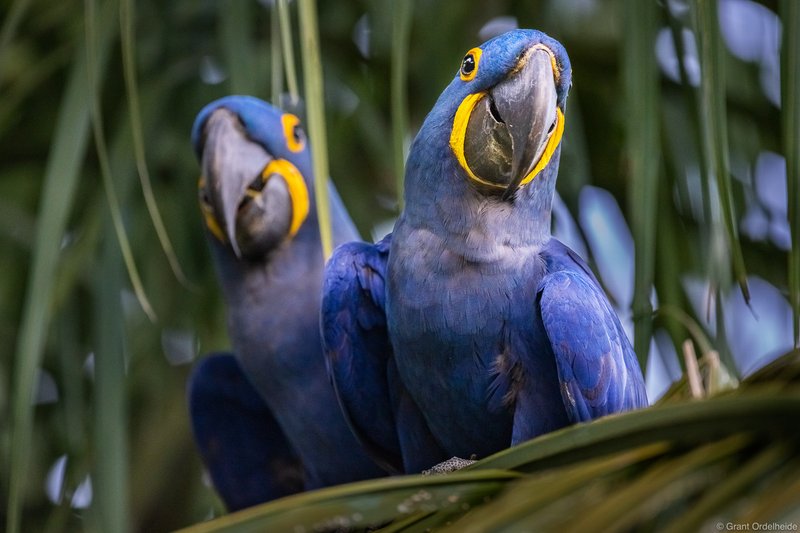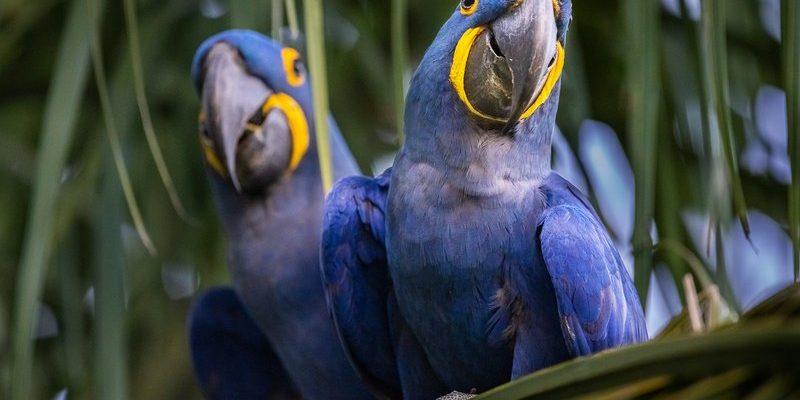
Let’s dive into the various initiatives being taken to ensure that these beautiful creatures continue to grace our skies. Think of conservation like a puzzle—each piece plays a vital role in creating a complete picture of survival and recovery for the hyacinth macaw. From community involvement to habitat restoration, every effort counts.
Why the Hyacinth Macaw is Endangered
You might be wondering why such a stunning bird is at risk of disappearing. The truth is, the hyacinth macaw faces several challenges that put its survival in jeopardy. One of the most significant threats is deforestation. As forests are cleared for agriculture or urban development, the natural habitat of these birds shrinks dramatically. Without enough trees to nest in or food to eat, their chances of survival plummet.
Another factor that significantly impacts their population is the illegal pet trade. Hyacinth macaws are highly sought after because of their beauty and intelligence. Sadly, this means that many are captured and sold, often under harsh conditions. These practices not only threaten wild populations but also disrupt local ecosystems.
The Role of Conservation Organizations
Organizations like the World Wildlife Fund (WWF) and BirdLife International have stepped in to help protect the hyacinth macaw. They work tirelessly on multiple fronts—raising awareness, engaging local communities, and funding research initiatives. For example, they actively promote sustainable agricultural practices that allow farmers to thrive while preserving the forests that the macaws depend on.
By collaborating with local governments and communities, these organizations help implement protective measures. They provide resources and training to local people, empowering them to engage in conservation themselves. This approach is vital because when locals are invested in protecting their environment, the efforts are more likely to succeed.
Community Engagement in Conservation Efforts
Here’s the thing: when it comes to wildlife conservation, community involvement is essential. Local people often know the land and its animals better than anyone else. Many conservation projects tap into this indigenous knowledge, creating programs that enhance both the local economy and the environment.
For instance, some initiatives promote eco-tourism. Local communities can benefit financially from visitors who come to observe hyacinth macaws in their natural habitat. This not only raises awareness about the importance of preserving these beautiful birds but also provides an economic incentive for locals to protect them instead of exploiting them.
Connecting with the community through education is another important aspect. Many programs educate children about the importance of biodiversity and conservation, fostering a sense of responsibility toward the environment. By instilling these values in the younger generation, we create future advocates and protectors of the hyacinth macaw.
Habitat Restoration Projects
Restoring the natural habitats where hyacinth macaws live is crucial for their recovery. Some organizations focus on reforestation efforts, planting native trees that provide food and nesting sites. These projects are like giving the birds a new home where they can thrive and reproduce safely.
Moreover, the restoration process isn’t just about planting trees; it also involves creating a balanced ecosystem. This means ensuring that the flora and fauna work together harmoniously. For instance, when restoring an area, it’s essential to consider the entire ecosystem, including the insects and plants that support the birds’ needs.
You might be surprised to learn that many of these habitat restoration projects also have broader environmental benefits. Healthier forests help combat climate change, improve air quality, and promote biodiversity, making them essential for our planet as a whole.
Legal Protections and Policies
In many countries, laws and policies play a vital role in the conservation of hyacinth macaws. For instance, in Brazil, where many of these birds are found, specific regulations protect both the species and their habitats. These laws aim to prevent illegal trapping and logging, but enforcement can sometimes be a challenge.
Conservationists are pushing for stricter laws to protect not just hyacinth macaws, but all endangered species. Strengthening legislation can create a safer environment for both wildlife and the communities that depend on sustainable resources. It’s about ensuring that we all play a part in safeguarding these animals for the future.
The collaboration between governments, NGOs, and local communities is essential for effective conservation. Together, they can monitor populations, ensure compliance with laws, and develop new strategies to counter threats. This cooperation is a huge piece of the conservation puzzle.
Public Awareness and Advocacy
Raising public awareness about the plight of the hyacinth macaw is another vital aspect of conservation efforts. When people understand the beauty and importance of these birds, they’re more likely to support conservation initiatives. Social media platforms have become powerful tools for spreading awareness, engaging millions with stunning images and stories about the hyacinth macaw.
Additionally, events like World Parrot Day offer great opportunities to spotlight these magnificent birds and their needs. Schools, conservation groups, and wildlife enthusiasts often participate in various activities, from educational programs to fundraising events, all aimed at generating interest and support for hyacinth macaw conservation.
When the general public starts paying attention, it can lead to real change. Increased interest can encourage organizations to allocate more resources and funding toward protecting these jewels of the sky. It’s a reminder that every voice counts in the call for conservation.
Successful Recovery Stories
Despite the challenges, there are success stories that show how effective conservation efforts can be. For example, in the Pantanal region of Brazil, dedicated organizations have helped stabilize the hyacinth macaw population through a mix of habitat restoration, community engagement, and legal protection. Once on the brink of extinction, their numbers have slowly started to climb.
These stories inspire hope and demonstrate that with concerted effort, we can make a difference. It’s a bit like a team sport—you need the right players working together to score goals. When everyone contributes, even the smallest steps can lead to significant victories.
Seeing hyacinth macaws flourish once again reminds us that conservation isn’t just about saving a species; it’s about preserving the beauty and diversity of our world. It’s a collective journey toward a healthier planet.
How You Can Help
You might be wondering, “What can I do to help the hyacinth macaw?” The good news is there are plenty of ways to contribute, even from afar.
– Educate yourself and others: Read about the hyacinth macaw and talk about their plight with friends and family. The more people know, the more support conservation initiatives can gather.
– Support reputable conservation organizations: Donations, volunteering, or even just sharing their posts can help amplify their efforts.
– Choose sustainable products: Supporting sustainable forestry and agricultural practices can reduce the pressure on the habitats that hyacinth macaws rely on.
Every small action can lead to significant change. Just remember, while it may seem like a big task, protecting the hyacinth macaw and its habitat is an effort we can all take part in.
In conclusion, conservation efforts aimed at protecting the hyacinth macaw are vital to ensuring this beautiful bird has a future in our skies. From habitat restoration and community engagement to legal protections and public awareness, every piece of the puzzle plays a crucial role. By coming together, we can help safeguard not just the hyacinth macaw but the rich biodiversity that enriches our planet. So, let’s spread the word and work together for a brighter future for these magnificent birds!

